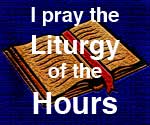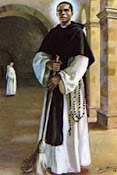 Some sources report there are over 300 St. Colmans from Celtic Church traditions; I can confirm, myself, they are numerous just from reading and searching old Irish Christian books, calendars and lists. St. Colman of Cloyne, St. Colman of Dromore and St. Colman of Lindisfarne are just the beginning of such a list.
Some sources report there are over 300 St. Colmans from Celtic Church traditions; I can confirm, myself, they are numerous just from reading and searching old Irish Christian books, calendars and lists. St. Colman of Cloyne, St. Colman of Dromore and St. Colman of Lindisfarne are just the beginning of such a list.However, today's St. Colman is one of the great Irish saints, St. Colman Mac Duagh (or St. Colman of Kilmacduagh).
He was born in 560, the son of the Irish chieftain, Duac (from the race of Fiachre, one the 4 sons of Eochaidh Muidhmheadhoin). His hagiography tells the story of a prophesy his father heard before Colman's birth that his son was destined to surpass in greatness all the others of his prestigeous lineage. After a miraculous rescue from Duac's jeleousy by Our Lord, Colman's mother, Queen Rhinagh, gave birth to him in self-imposed exile and solitude. The story of his baptism is also a miraculous event; the well in Corker where he was baptized is still a site of pilgrimage.
After his ordination, he lived as a hermit first at Arranmore and then Burren Forrest.
St. Enda was the head of the key monastery on Aranmore and instructed St. Colman in his spiritual path. In the few years on Aranmore, St. Colman built 2 churches.
Wanting to live in even more solitude, he secluded himself to the Burren Forrest (unlike today, it was very dense in his day). He lived there for seven years. Leaba Mhic Duagh (his cave or "grotto") is still very well preserved after over 1400 years along with the remains of a small oratory he constructed. It is recorded it was during this period he had his three unusual companions/pets. They were a fly, a mouse and a rooster. All three had "jobs" and reportedly responded to his commands. He had a great love of animals and he is reported to have had an overwhelming sadness when the last of the pets died. His sadness was so heavy that he wrote to his friend the great St. Columba of it. St. Columba's response remains with us today:
Wanting to live in even more solitude, he secluded himself to the Burren Forrest (unlike today, it was very dense in his day). He lived there for seven years. Leaba Mhic Duagh (his cave or "grotto") is still very well preserved after over 1400 years along with the remains of a small oratory he constructed. It is recorded it was during this period he had his three unusual companions/pets. They were a fly, a mouse and a rooster. All three had "jobs" and reportedly responded to his commands. He had a great love of animals and he is reported to have had an overwhelming sadness when the last of the pets died. His sadness was so heavy that he wrote to his friend the great St. Columba of it. St. Columba's response remains with us today:
You were too rich when you had them. That is why
youare sad now. Great troubles only come where there are great
riches. Be rich no more.
This story is quite a lesson in learning what true riches are and how even the most humble of riches can have a spiritually blocking effect!
He was reputedly ordained a bishop against his will. He eventually founded the monastery at Kilmacduagh on land given for that use by his relative King Guaire of Connachta (Connaught). Today, the remains of this monastery are famous ruins containing the best preserved example of an Irish round tower in existance.
He was reputedly ordained a bishop against his will. He eventually founded the monastery at Kilmacduagh on land given for that use by his relative King Guaire of Connachta (Connaught). Today, the remains of this monastery are famous ruins containing the best preserved example of an Irish round tower in existance.

The Martyrology of Donegal oddly records his feast day as February 2. But its entry also notes that Ua Sechnasaigh (The O' Shaughnessy or head of the clan) during the martyrology's writing mentions the family always celebrated his feast on October 27 (another oddity). His feast is always celebrated on October 29.
Relics
Relics
Of his relics, St. Colman's tomb is still in existance.
It is known that his belt (girdle or cinture) was perserved as a holy relic. It remained in the possession of his kinsman, the O'Shaughnessy's. It was later studded with precious gems and alleged to have the mystical trait of no one that was not chaste being able to wear it, no matter how thin. It disappeared during the Battle of the Boyne, where the O'Shaughnessy's had taken it into battle with them for luck and its whereabouts are now unkown.
St. Colman's crozier has been used through the centuries for the swearing of oaths. Although it was in the custodianship of the O' Heynes of Kiltartan (descendants of King Guaire) and their relatives, the O' Shaughnessys, it is now in the National Museum in Dublin.
It is known that his belt (girdle or cinture) was perserved as a holy relic. It remained in the possession of his kinsman, the O'Shaughnessy's. It was later studded with precious gems and alleged to have the mystical trait of no one that was not chaste being able to wear it, no matter how thin. It disappeared during the Battle of the Boyne, where the O'Shaughnessy's had taken it into battle with them for luck and its whereabouts are now unkown.
St. Colman's crozier has been used through the centuries for the swearing of oaths. Although it was in the custodianship of the O' Heynes of Kiltartan (descendants of King Guaire) and their relatives, the O' Shaughnessys, it is now in the National Museum in Dublin.
Prayer
Aingil De dar gcoimhdeacht
's dar sabhail aris go fuin;
ar coimri De is Mhuire,
Mhic Duach is Mhic Daire
agus Colm Cille
aris go fuin.












0 comments:
Post a Comment